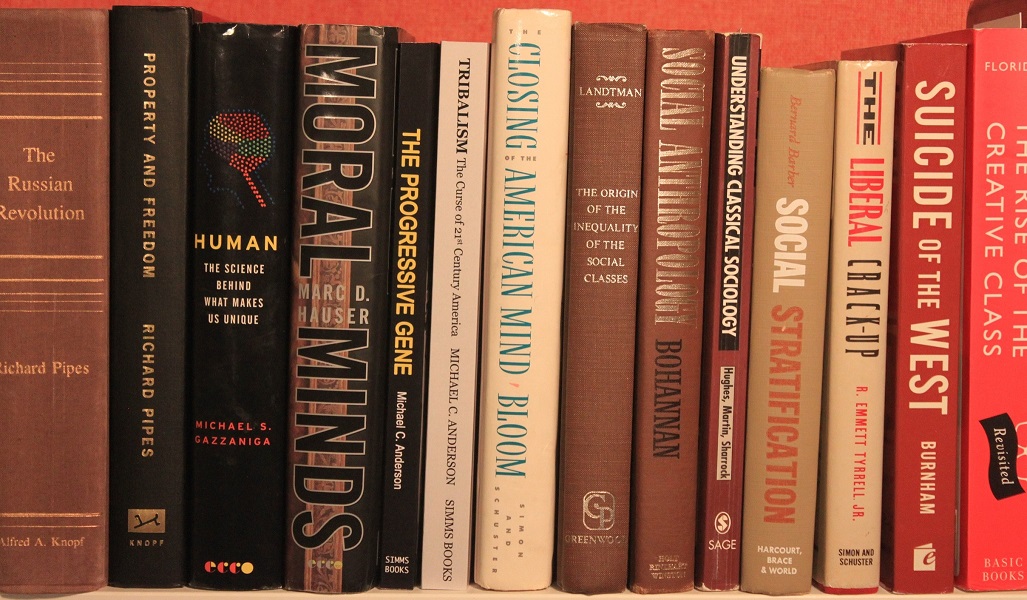I read an interesting article the other day that characterized American's feelings about the pandemic and their response to it (Associated Press, April 6). The article
mentions we are being highly compliant with government guidelines, and 94%
are following social distancing rules. It also discusses people’s concerns over
job loss affecting their income and the impact of closed day care centers on
trying to manage their children.
Most interesting, though, were the responses to the question
about whether people are worried they’ll contract the disease. Among Democrats,
65% say they are strongly worried about getting infected whereas only 31% of
Republicans say they are strongly worried.
Why is the such a great discrepancy between the two groups?
My books are focused on the biological, psychological, and
moral differences between the political Right and the Political Left. Those
differences are important for many reasons. They explain political behavior;
why the Left wants more changed than the Right does, for example. Most importantly,
differences between them demand that the two sides understand each other, in
order to make progress. There is no wrong; there are only differences in
beliefs. Since our political spectrum includes both groups, they have to figure
out how to get along with each other. Each group has needed the other throughout
the history of man. The Right needs the Left to push it toward change and the
Left needs the Right to make sure the change is not too radical. Coexistence
and compromise lead to the best outcomes.
If we look deeper into the makeup of the American political spectrum,
we can see seven different groups. On the Left are Progressives, Traditional
Liberals, and Passive Liberals. Passive Liberals are not involved in politics.
On the Right are Traditional Conservatives and Devoted Conservatives. Devoted
Conservatives are ideologically rigid. In the middle are two groups: the
disengaged and the moderates. The disengaged do not participate in politics and
generally don’t listen to the news. Moderates are the independent voters who
are always in the news.
The three groups on the Left account for 86 million people.
The two groups on the Right account for 63 million people. There are 253
million adults in the United States.
Why are only half as many Republicans worried about being
infected? Research shows that people on the Right are more careful and don’t
like change as much as people on the Left. People on the Left love change. Morally,
people on the Right respect loyalty, authority, and sanctity (reverence for
important traditions). People on the Left are tuned in to caring and fairness.
Their number one concern is the hurt experienced by others. That is why the
Left worries about poverty and inequality.
The Left values traditional religion less than the Right but
embraces secular religions, like the environment.
Sanctity, before it was the veneration of traditions, was expressed
as a human need to stay safe from what was dirty or diseased. In the primitive world
it was essential to avoid the sick or one could die.
There are logical reasons for the Left’s anxiety at this time. People on
the Left occupy the larger urban centers where disease transmission is at its
highest, and there are more women who are Democrats than Republicans. Women are
more concerned than men with the safety of their children. Additionally, the incumbent
president is a Republican, who they dislike, and so they may not trust him to
handle the pandemic appropriately.
Surveys show that people on the Right are happier than
people on the Left. Maybe this is due to the Left’s impatience with fixing the
world’s problems, but control over one’s life is also a factor. People on
the Right feel that have the responsibility as individuals to take control of
their lives, so they act toward that end. People on the Left are too obsessed
with victimhood. They feel they don’t have control and are subject to the whims
of others.
The Coronavirus has made the Left more conservative, as they
experience anxiety over the threat to their health. Surveys done after 911
showed that 30% of liberals became more conservative (temporarily) as a result
of the attack. This is a natural reaction to chaos – a global or national event
that has never happened before and disrupts society. Psychological experiments
have been performed using a similar approach. If you put liberals in front of
a computer screen and have them answer questions designed to indicate their
political affiliation, their answers provide a valid baseline. Then, you
bring a smelly garbage can into the room and run the questionnaire again. The liberals
become more conservative, placing a greater emphasis on the moral principle of purity
and avoiding disease.
Is the world’s response to this pandemic partly driven by
the angst of the Left? Fear of the infected? That seems logical since the Left
controls the media, and the media amplifies what happens in the world. We had
HIV, Ebola, and SARS without much fanfare. They were new like COVID-19, although
they did not spread as widely or quickly as this disease. I’m not saying this a
conspiracy, but maybe a result of the increased sensitivity of the times.
What should we think if the Pandemic runs its course with a
death rate below that of the seasonal flu, which is estimated to kill 24,000-63,000 thousand Americans this season? As of April 8th, the COVID-19 toll stood
at 12,988.

No comments:
Post a Comment